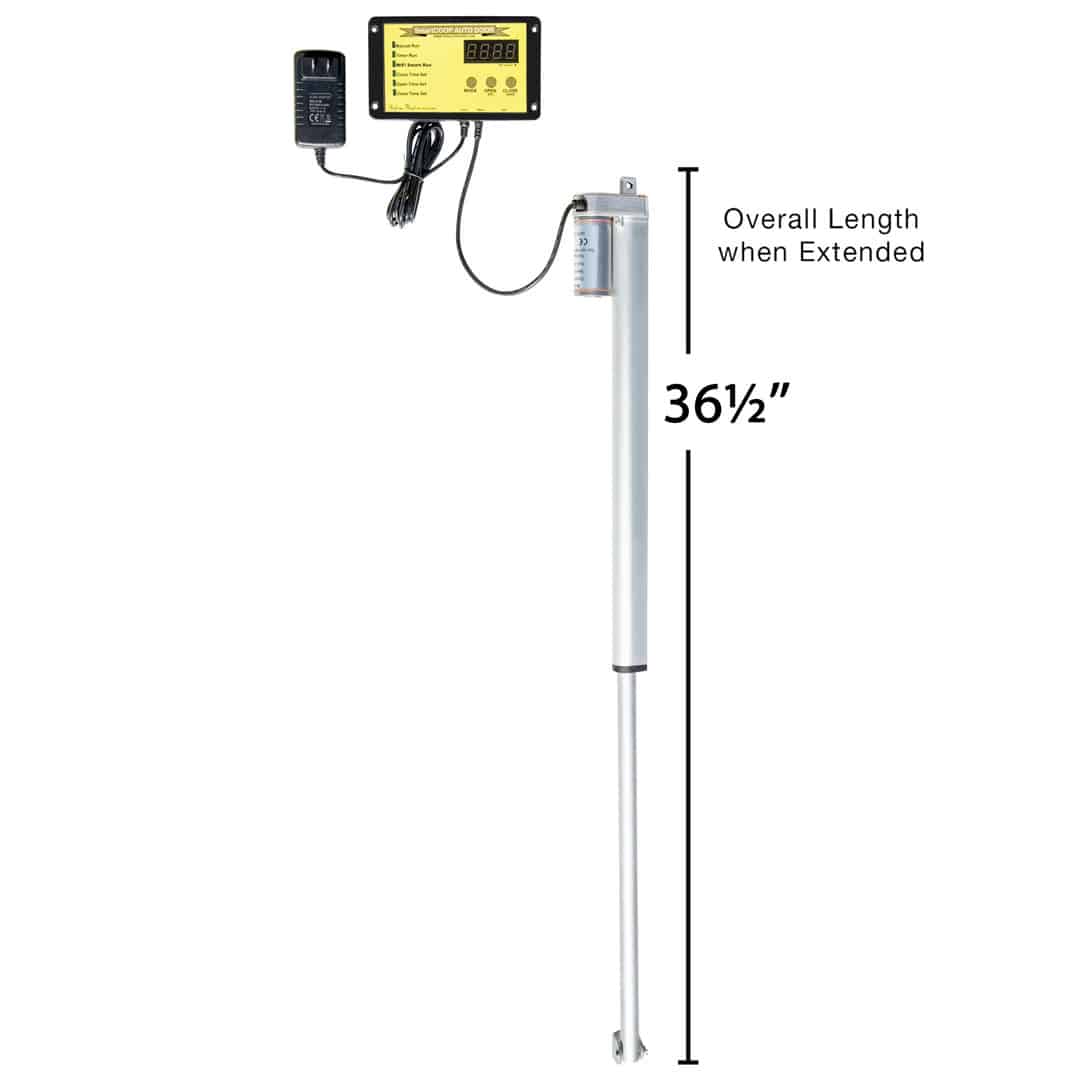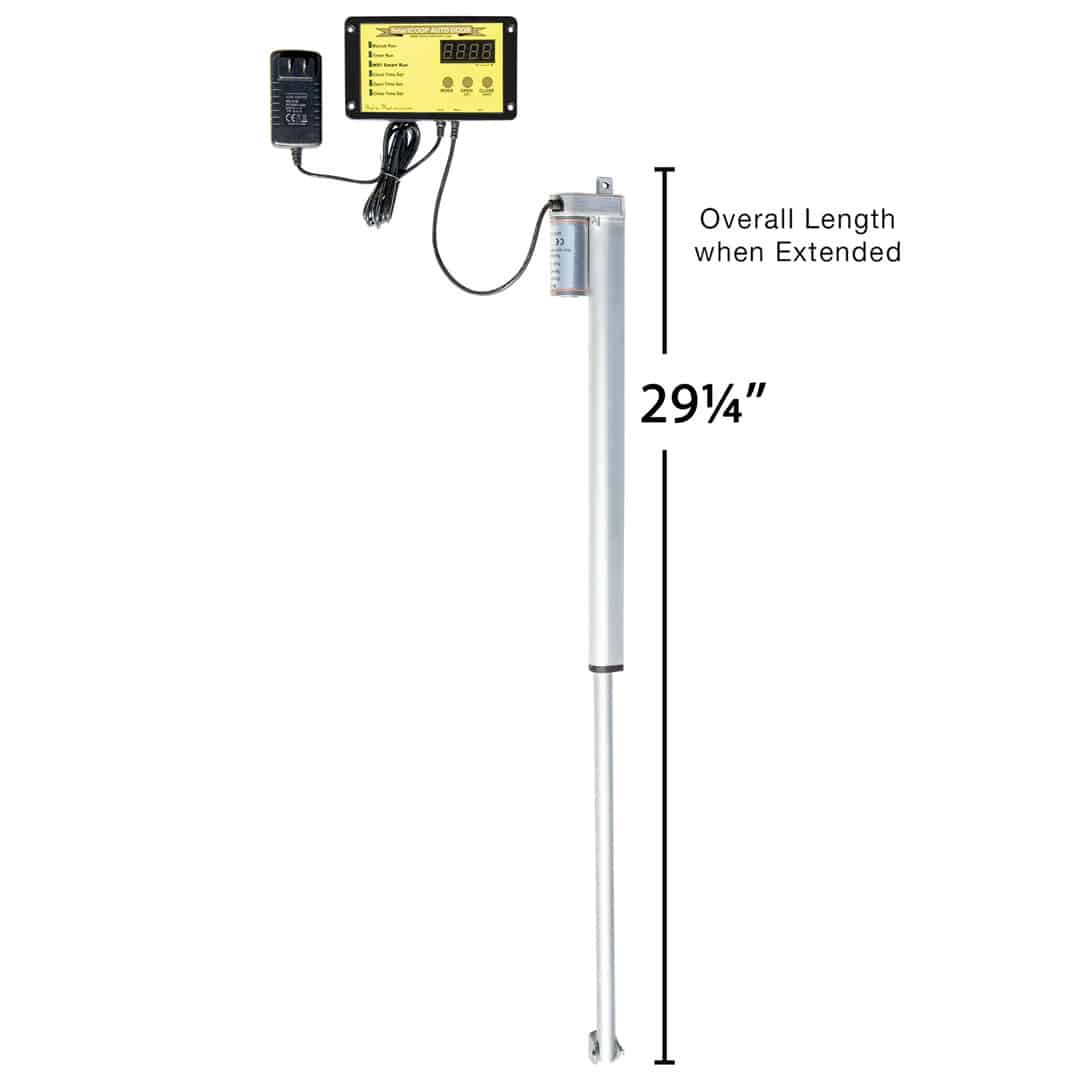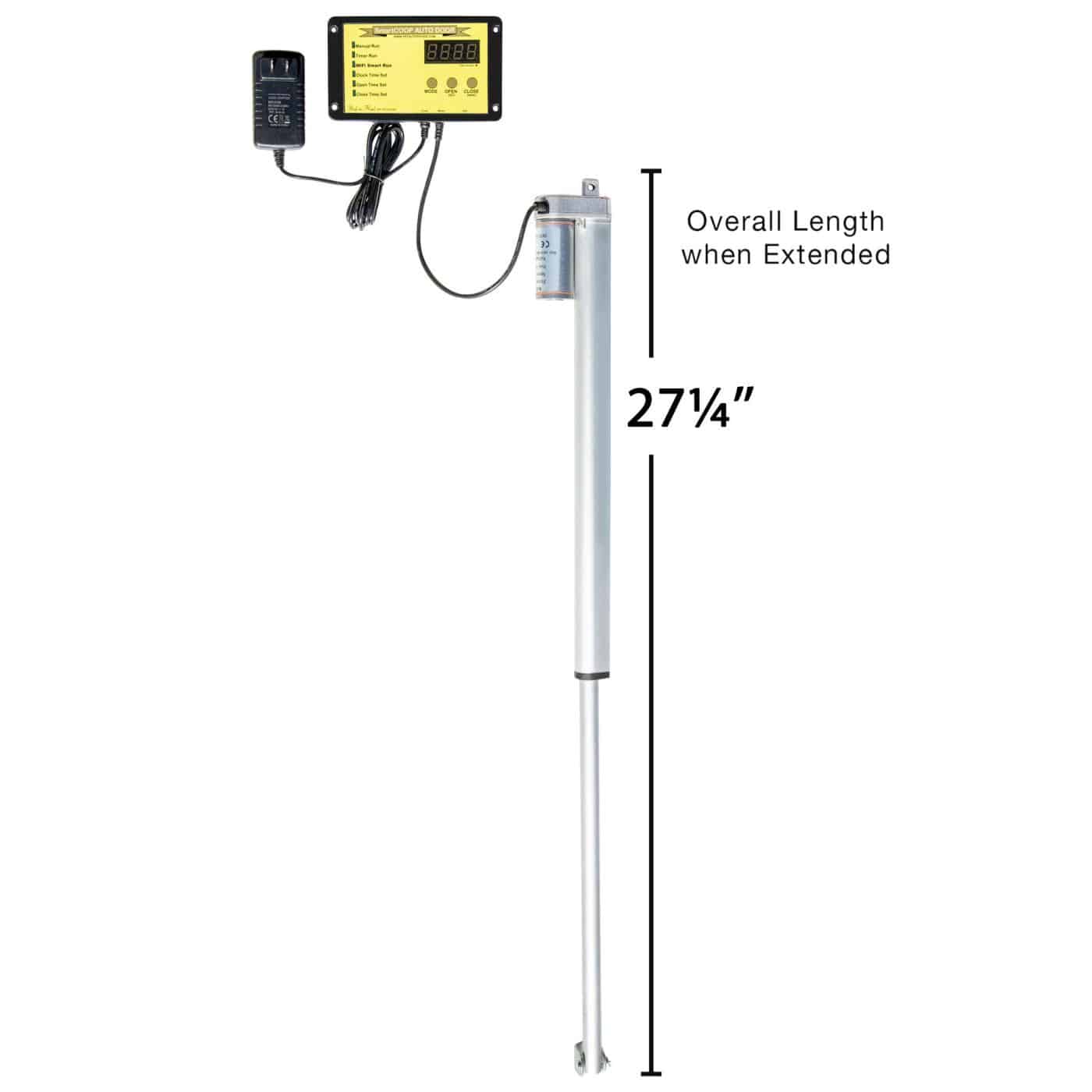DIY Chicken Coop Door

Keeping your chickens safe and secure while giving them the freedom to roam is a top priority for any backyard chicken keeper. A well-designed DIY chicken coop door is essential for protecting your flock from predators and controlling their access to the outdoors. In this guide, we’ll cover everything you need to know about building and installing your own automatic chicken coop door.
Table of Contents
Why Build a DIY Chicken Coop Door?

Building your own chicken coop door is a fun and rewarding project that gives you full control over your flock’s safety and convenience. You can design it to match your coop’s style, choose durable materials, and decide whether a sliding or swinging door works best. Plus, you get to place it exactly where it makes the most sense for easy access. Beyond customization, a sturdy door is key to keeping out predators like raccoons and foxes, ensuring your chickens stay safe while enjoying their daily routine.
Factors to Consider Before Building Your DIY Chicken Coop Door

When building a DIY chicken coop door, it’s important to consider several factors to ensure it’s practical, durable, and secure. The door plays a crucial role in protecting ad providing easy access for both you and your chickens, here are some key aspects to think about before starting your project.
Location and Space
The placement of your coop affects how easily and efficiently the door functions. Ensure there’s enough clearance to open and close it without obstruction, and position it at a height that allows chickens to move freely while keeping bedding inside. Consider factors like wind direction, sun exposure, and potential flooding, as these can impact durability and ease of use. If your coop is elevated, a ramp may be necessary to provide smooth access for your flock.
Flock Size
The number of chickens in your flock will influence how often the door is used and how large it should be. A small flock can manage with a standard-sized door, but if you have a larger group of birds, a wider opening may be necessary to prevent bottlenecking when they exit or return. Frequent use also means the door should be sturdy and durable, as it will undergo a lot of wear and tear over time.
Climate
Weather conditions should guide your choice of materials and design. If you live in a cold climate, an insulated door will help keep warmth inside the coop, while in hotter regions, proper ventilation should be a priority to prevent overheating. For areas with heavy rain or humidity, water-resistant materials like treated wood, plastic, or metal will help prevent rot and warping. If your coop gets a lot of direct sunlight, UV-resistant coatings can prevent fading and damage over time.
Ease of Use
A chicken coop door should be easy for you to operate while ensuring your flock stays secure. Smooth hinges, sturdy handles, and user-friendly latches can make opening and closing the door effortless. If you want a hands-free option, an automatic door with a timer can be a great solution, especially if you’re not always around to open and close it manually. Wifi-enabled doors have a feature that adjusts the door to open and close based on sunrise and sunset. Additionally, if children or others will be helping with the chickens, keeping the door’s design simple and accessible is a good idea.
Materials for DIY Chicken Coop Doors

The right material for your DIY chicken coop door affects durability, security, and maintenance. Consider your climate and predator risks when choosing the best option.
Wood
Wood is a popular choice for DIY chicken coop doors due to its natural look, ease of customization, and insulation properties. It helps regulate temperature inside the coop, keeping chickens comfortable in different seasons. However, untreated wood can warp or rot over time, so sealing or weatherproofing is essential for long-term durability.
Metal
Metal doors provide excellent durability and security, making them a great option for predator protection. They resist chewing and scratching from animals like raccoons or foxes, ensuring your flock stays safe. However, metal can become very hot in direct sunlight, so proper placement or insulation may be needed in warmer climates.
Composite Materials
Composite materials, such as PVC or plastic, offer a low-maintenance and weather-resistant alternative to wood and metal. They won’t rot, warp, or rust, making them ideal for humid or wet climates. While not as strong as metal, they still provide decent protection and can be reinforced if needed.
Mesh & Wire
Using mesh or wire for a coop door can improve ventilation while keeping predators out. Hardware cloth is a more secure option than standard chicken wire, as it resists tearing and bending. While great for airflow, mesh doors should be paired with a solid or insulated option to protect against extreme weather.
Automating Your Chicken Coop Door

One of the biggest advantages of a DIY coop door is the ability to automate it. We offer chicken coop openers with 16-inch, 12-inch, and 10-inch stroke options, allowing you to customize the opening size based on your coop’s needs. Installing an automatic opener is straightforward, and it offers several benefits:
Convenience
Automating your chicken coop door eliminates the need for manual opening and closing, saving you time, especially during early mornings or late nights. It’s perfect for those days when you’re running behind or don’t want to wake up early just to tend to your flock.
Increased Security
An automatic door ensures that your coop remains securely closed at night, protecting your chickens from predators. The door closes at a set time each evening, ensuring your flock is safe even if you’re not home to close it manually.
Consistency
With an automatic opener, your door will open and close on a regular schedule, ensuring your flock follows a consistent routine. This helps your chickens get used to a set time for free-range activities, improving their overall health and behavior. Additionally, consider an automatic opener can with Wi-Fi that allows you to adjust the door’s opening and closing times remotely.
Energy Efficiency
For even greater energy savings, consider adding a solar panel kit to power your automatic door. This eco-friendly option harnesses solar energy, allowing you to run the door without relying on electricity, making it a sustainable and cost-effective solution for your coop.
Installation
Installing an automatic chicken coop door is a simple process that enhances convenience and security. Follow these steps to set up your door:
- Mount the Motor or Linear Actuator
Securely mount the motor or linear actuator above the door, ensuring it’s positioned to handle the door’s movement. - Attach the Door
Use the recommended hardware to attach the door, making sure it’s properly aligned for smooth operation. - Set the Timer or Sensor
Set the timer or sensor to sync with sunrise and sunset, so the door opens and closes automatically. - Test the Mechanism
Test the door to ensure smooth operation and make adjustments as needed before fully relying on it.
If you need assistance during installation, use our guide for step-by-step help to ensure everything is set up correctly. With these steps, your automatic door will be set up and ready to use.
Frequently Asked Questions For DIY Chicken Doors

Is It Cheaper To Build Or Buy A Chicken Coop?
Building a chicken coop can be cheaper if you have the skills and tools, with costs ranging from $100 to $500 for basic DIY projects. However, it can be time-consuming, and mistakes may lead to extra expenses.
Buying a pre-built coop typically costs $200 to $2,000, but it’s more convenient and comes with better durability and features. If you’re looking for a hassle-free solution, a pre-made coop or automatic door opener might be the better option.
How Can I Make My Chicken Coop Door Predator-Proof?
To keep predators out, use strong materials like metal or reinforced wood, and make sure the door is securely latched. You can also add hardware cloth or mesh around the door area to prevent predators like raccoons from reaching through the gaps. Read more on how to make your chicken coop door predator-proof here.
Should I Automate My DIY Chicken Coop Door?
Automating your chicken coop door offers numerous benefits, such as increased security and convenience. With an automatic door, you don’t have to worry about opening or closing the door manually, and it will close securely at night to protect your chickens from predators.
How Can I Add Ventilation To My Chicken Coop Door?
Adding ventilation to your chicken coop door is essential to prevent overheating and to keep the air fresh inside the coop. You can use mesh or wire in the door, or install vents that can be opened and closed depending on the weather. Be sure the openings are small enough to prevent predators from getting in.
What Maintenance Do I Have To Do For My Chicken Door?
To keep your chicken coop door working smoothly, regularly clean dirt and debris from tracks or hinges, check for loose screws, and grease moving parts to prevent sticking. If you have an automatic door, inspect the motor, battery, or solar panel to ensure everything functions properly.
Need help? We have a video guide on how to grease your coop door for easy maintenance!
Get Started

Building your own DIY chicken coop door is a rewarding project that offers both customization and practicality. Consider factors like your flock size, climate, and security needs to choose the best materials and design for your coop. If you’re looking for an easy upgrade, our selection of automatic chicken coop doors and openers are a great option for added convenience and security, and chicken coops are perfect for any backyard setup. Whatever you choose, building or upgrading your chicken coop door will ensure your flock is happy, healthy, and safe.





